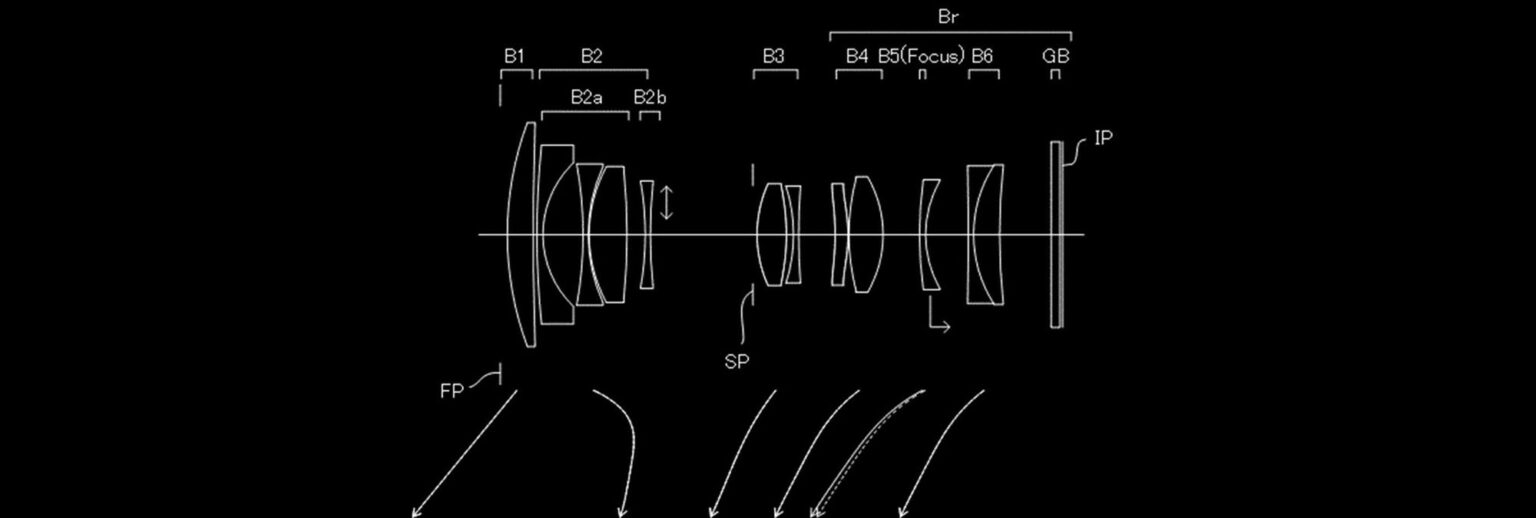In this patent application (2024-078721), Canon is showing off some embodiments of some smaller standard F2.8 zooms. While at first glance, this seems unlikely we should also keep in mind that Tamron’s smaller 28-70 F2.8 was very well received. So it’s possible that Canon may be looking at doing something similar. At a collapsed lens length (without the focal plane distance) of 110mm this is a very small fast normal full-frame lens.
Canon RF 28-70mm F2.8

| Wide | Medium | Telephoto | |
| Focal length | 28.80 | 50.00 | 68.80 |
| F-Number | 2.90 | 2.90 | 2.90 |
| Half Angle of View | 34.92 | 23.26 | 17.46 |
| Image Height | 21.64 | 21.64 | 21.64 |
| Lens Length | 130.17 | 139.65 | 154.36 |
| Back Focus Distance | 13.97 | 24.10 | 33.42 |
As with all patent applications, none of these may end up as actual products, but it’s a glimpse into Canon’s ongoing research.
Source: Japan Patent Application 2024-078721
|
When you purchase through links on our site, we may earn an affiliate commission. Here's how it works. |


Generally I feel that on an IBIS camera, shutter speeds are so long that we don't need in-lens IS any more and would love to dispose of it if doing so makes the lenses notably smaller, cheaper, and better image quality. OTOH, I started Canon in 1995 with the 28-70 and felt the extra 4mm is really pretty key. For me 28mm is medium-wide while 24mm is suddenly actual wide.
I no longer need OIS on WA zooms or lenses, IBIS is so convincing. Lenses could indeed become lighter and smaller, maybe even a bit less expensive. And, if the saying is true, thanks to a rigid internal lens alignment, optical quality could even benefit.
On the other hand, I'm also convinced that zooms with a more limited range can be optically better. A 28-70 demands less design compromising than a 24-70.
Another reason why I'd never ever buy a Tamron 35-150...:ROFLMAO:
I don't know optics well enough to be sure that wider zooms have to be worse, but like you I suspect it. Still... 24mm is to me a lot more useful than 28mm at the wide end... Yes, you can usually just step back a few steps with 28mm and get a wider subject into the frame but 24mm is better if what you're trying to get in the frame would ideally be like 16mm.
On the other hand I carry my 16/2.8 in my backpack with the 50/1.8 on the camera, and I've even used it with the 24-105/4. (For instance family holiday photos at the in-laws where 24mm is still too narrow for their living/dining room.) The 16/2.8 would also be a useful emergency backup lens to have while shooting a 28-70/2.8, so maybe 24-70 isn't quite as important now.
But then I come back to the logic: you can crop 50/1.8 to 70mm or narrower and it has a bit bigger aperture so yet more bokeh. And 50/1.8 works at 50mm :-D . You can step back enough to not need 35mm... and if you need wider then you can crop the 16mm. And the 50/1.8 is seriously good, hand-holding on an R5 1/2 to 1/15 sec in my tests better than 1/30 or faster. (Which doesn't make sense but is weirdly true.)
Well, to put it short, I prefer primes anyway. I often tried 24-70, 24-105 or similar zooms, only to find out that results would be better with primes. Battling one's own laziness is the price to pay if you want sharper corners...
Cropping a 50 into a 70mm? Yes, with a high MP sensor , it works!
I find 28mm too wide, and prefer 35mm. :)
You are happy with your system, I'm happy with mine!
As I wrote, tastes are different...:)